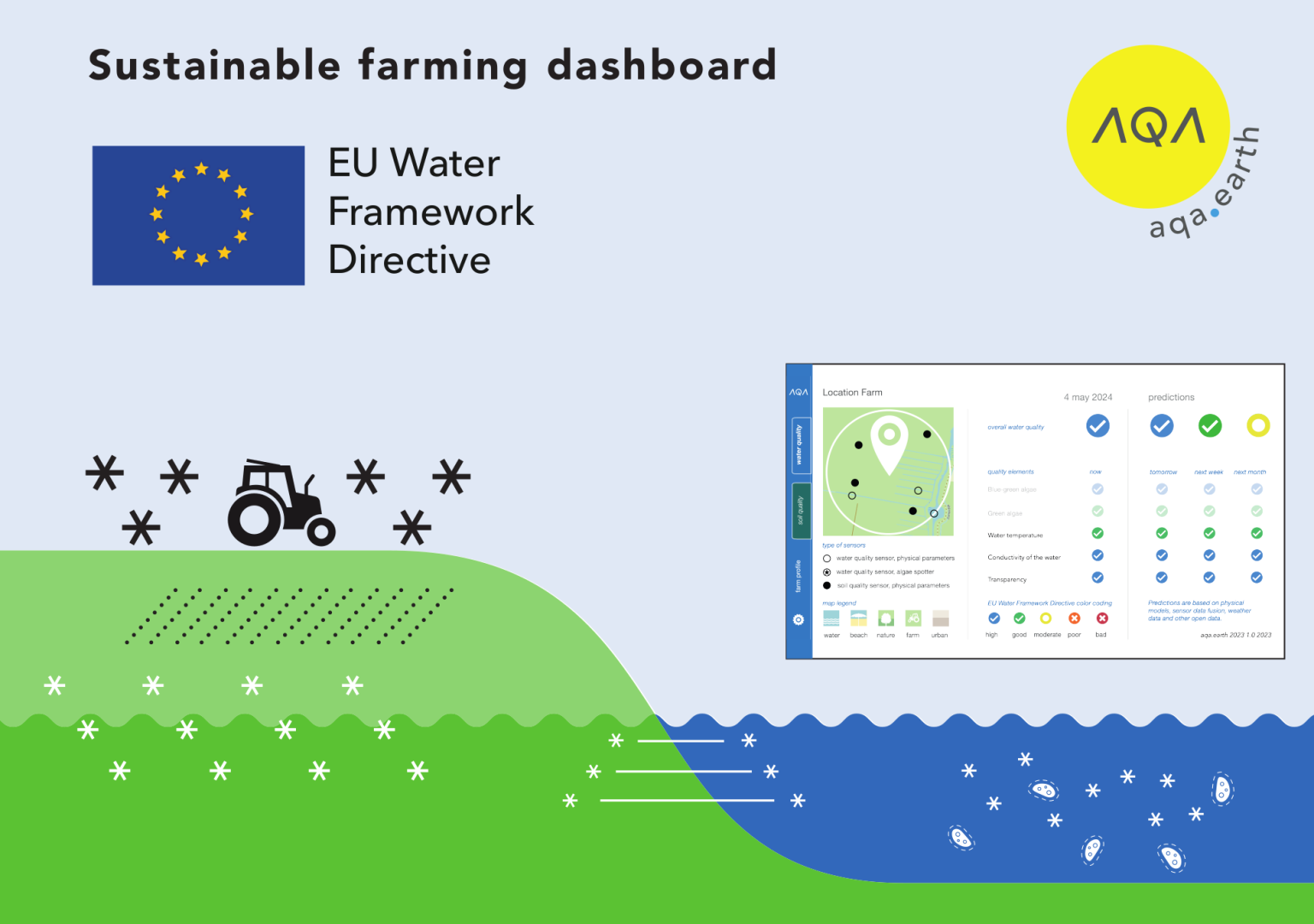Innovation lump sum: Sustainable farming dashboard

Project partner: aqa.earth
Country: The Netherlands
Industrial ecosystem: Agrifood
Summary:
In this project, aqa.earth aims to develop and showcase a soil and surface water quality dashboard, empowering farmers to optimize their operations by reducing pesticide and nutrient usage and improving surface water quality.
The main objective is to minimize environmental impact, particularly micropollutant and nutrient emissions, safeguarding aquatic ecosystems and preventing issues like eutrophication. The project focuses on aligning with the European Water Framework Directive and promoting sustainable agricultural methods, such as biological farming and alternative nutrient management.
The project's objectives include improving the existing dashboard based on farmer feedback, upgrading soil and water sensors for better measurements, and enhancing physics-based models to analyze and predict the relationship between soil quality and surface water quality.
By strategically deploying a sensor network on farms, real-time data on soil and water quality will be gathered and analyzed on servers. The dashboard will present the results in a comprehensive and farmer-friendly manner, emphasizing the impact of farming practices on surface water quality.
The project's roadmap involves collaborating with LTO and an end-user farmer to define the dashboard and optimize farming practices accordingly. The solution integrates sensor data, open data, and modeling techniques to provide accurate predictions and insights. By empowering farmers to prevent over-fertilization, reduce pesticide usage, and mitigate their operations' impact on surface water quality, the project aims to contribute to environmental sustainability and regulatory compliance. The project has the potential for replication across government bodies, water management authorities, and research institutions, facilitating informed decision-making and sustainable development.
| Attachment | Size |
|---|---|
| Project #101.pdf | 526.14 KB |